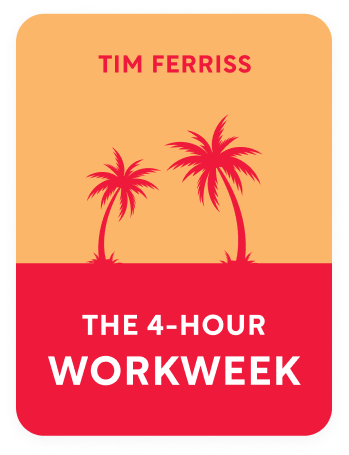

This article is an excerpt from the Shortform book guide to "The 4-Hour Workweek" by Tim Ferriss. Shortform has the world's best summaries and analyses of books you should be reading.
Like this article? Sign up for a free trial here .
What is the Parkinson Principle? How does it work, and how can you learn from it?
The Parkinson Principle states that any project will fill the amount of time you allot for it. With this in mind, it’s possible to spend less time on each project.
Read more about the Parkinson Principle and how it works.
The Parkinson Principle
Parkinson’s Law states that the amount of time you have for a project will dictate how important and difficult you think it is. You’ll use all the time allowed, even if the project doesn’t actually require it. In other words, work expand to fill time. In addition, you might actually do a worse job on the project than if you had less time because the time pressure forces you to focus.
Employees fall prey to The Parkinson Principle law all the time. It’s not necessarily their fault—because they have to work 9-5, they find things to do to take up all this time.
Entrepreneurs, however, don’t have a set schedule, so if they’re using more time than they need, or giving themselves extravagant deadlines, they have no excuse. They’re either copying the status quo or caught up in a bad habit so work expands to fill time for them as well.
The Best of Both
To gain yourself the most time, you want to employ both the 80/20 rule and Parkinson’s Law. Only do important tasks, and give yourself short deadlines to achieve them.
For example, Charney is a technology salesman with young children. To win himself more time to spend with his family, he followed the 80/20 rule. Three times a day he asked himself if he was being productive or just busy. If he was only busy, he stopped doing whatever he was doing and moved on to a task that was actually important. To apply The Parkinson Principle, he took Mondays and Fridays off to cut down on the amount of time he had to get his work done. After five weeks, he was working 18 hours a week and being four times as productive as he had been working 40 hours.
Applying the Laws
Since we know work expands to fill time, there are several questions to ask yourself when learning to apply the 80/20 rule and The Parkinson Principle to your job and life. While answering, keep in mind that you want to negatively affect your income as little as possible.
- If you could only work two hours a day, what are the things you would do? Pretend your doctor’s forbidden you to work more than this and there’s absolutely no way to get around it.
- If you could only work two hours a week, what are the things you would do?
- Are you making full use of Parkinson’s Law? Do some or all of the following:
- Try to minimize the amount of time you spend working. Take a day or two off per week, and leave at 4 p.m. every day. (There are more details about how to do this if you’re an employee in Chapter 8.)
- Keep your to-do list short and give yourself short deadlines. This will help you ignore details.
- Do you use a countdown timer to keep track of deadlines?
- What three things do you do to procrastinate doing important things?
- Are you procrastinating important things by inventing busywork? Consider this question three times a day. You can stick a post-it to your monitor or set a digital reminder to remind yourself to ask. You can also use time-tracking software to tell you when you spend over a certain amount of time procrastinating (on email, social media, and so on).
- When you feel like you need more time, what can you get rid of?
- For example, consider people, commitments, and thoughts.
- If you had to stop 80% of time-consuming work, what would you stop?
- For example, most people find checking emails and attending meetings time-consuming.
- If you can only get one thing done today, what’s the thing you’ll be glad you achieved? Create tomorrow’s to-do list tonight. The list should never have more than two really important things on it, and the author recommends using a piece of paper for the list because there’s a finite amount of space.
- For example, if something seems time-sensitive but isn’t that important, consider what happens if you don’t do it. If you return a book to the library the day it’s due rather than doing something important, you might save yourself a $1 late fee, but you won’t have achieved the important thing, which is a much bigger consequence than being out a dollar.
- Are you multitasking? Never multitask. It’s inefficient, and if you find yourself wanting to do it, it’s because you haven’t prioritized. Multitasking may make you feel more efficient, but this is a ruse.
- Of the people you know, which 20% creates 80% of your most rewarding social interaction, and which 20% is responsible for 80% of your negativity? Think about who’s positive and how you can increase the time spent with them, and who’s negative and how you can decrease time spent with them. Of the negative people, what happens if you totally stop seeing them instead of only decreasing time with them? (Fear-set if you need to.) Breaking up with people is hard and it hurts, but it’s very important, as you’re heavily influenced by the five people you’re closest to. There are two ways to disengage from negative people:
- Tell the person you’re concerned about their negative effect on your life. If they respond negatively, you’ve proved your point and you can stop seeing them. If they want to change, spend at least 14 days away from that person, so you can focus on the positive people, and then try interacting with them again. There should be a deadline for the relationship.
- Politely avoid contact. If you don’t want to outright break up with someone, have a reason not to see them (being busy is a good one) every time they want to talk or meet.
Now that you understand The Parkinson Principle, you can apply this law to your own work in order to be more efficient.

———End of Preview———
Like what you just read? Read the rest of the world's best book summary and analysis of Tim Ferriss's "The 4-Hour Workweek" at Shortform .
Here's what you'll find in our full The 4-Hour Workweek summary :
- The 4-step process to live a "retired" lifestyle now
- Find out if you're wasting the best years of your life working a 9-5
- How to create a business that makes you money without sucking up your time






